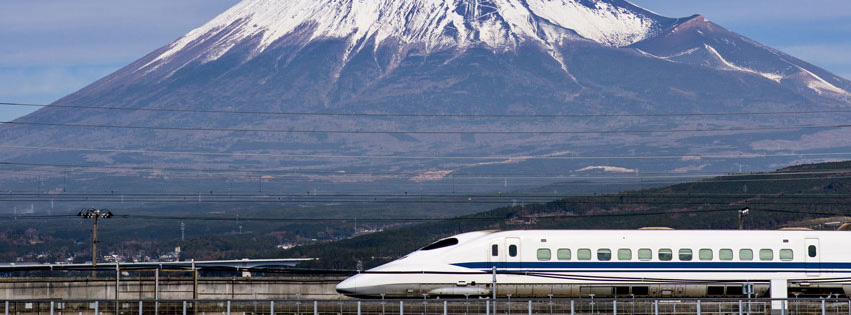Maglev Bullet Train
The Maglev Bullet Train is a high-speed bullet train based on magnetic levitation. It replaces the traditional wheel and track type of train allowing it to float slightly, making it run at much higher speeds. There are also many other benefits other than speed.
Maglev trains use powerful electromagnets to make the train float over the guidways. With no rail friction, the electromagents allow the train to hit speeds of hundreds of miles per hour, making it one of the fastest trains. The magnetized coil running along the track, called a guideway, repels the large magnets on the train's undercarriage, allowing the train to levitate just a few inches above the guideway. Once the train is levitated, power is supplied to the coils within the guideway walls to create a unique system of magnetic fields that pull and push the train along the guideway. The electric current supplied to the coils in the guideway walls is constantly alternating to change the polarity of the magnetized coils. This change in polarity causes the magnetic field in front of the train to pull the vehicle forward, while the magnetic field behind the train adds more forward thrust. Maglev trains float on a cushion of air, eliminating rail friction. This lack of friction and the trains' aerodynamic designs allow these trains to reach unprecedented ground transportation speeds of more than 310 mph (500 kph), or twice as fast as Amtrak's fastest commuter train. In comparison, a Boeing-777 commercial airplane used for long-range flights can reach a top speed of about 562 mph (905 kph). Developers say that maglev bullet trains will eventually link cities that are up to 1,000 miles (1,609 kilometers) apart. At 310 mph, you could travel from Paris to Rome in just over two hours.
With no rail friction, the electromagents allow the train to hit speeds of hundreds of miles per hour. Yet high speed is just one major benefit of maglev trains. Because the trains rarely (if ever) touch the track, there's far less noise and vibration than typical, earth-shaking trains. Less vibration and friction results in fewer mechanical breakdowns, meaning that maglev trains are less likely to encounter weather-related delays.
The high-speed maglev train is currently avaible to China, but is operational in a few other countires like Japan and South Korea.



